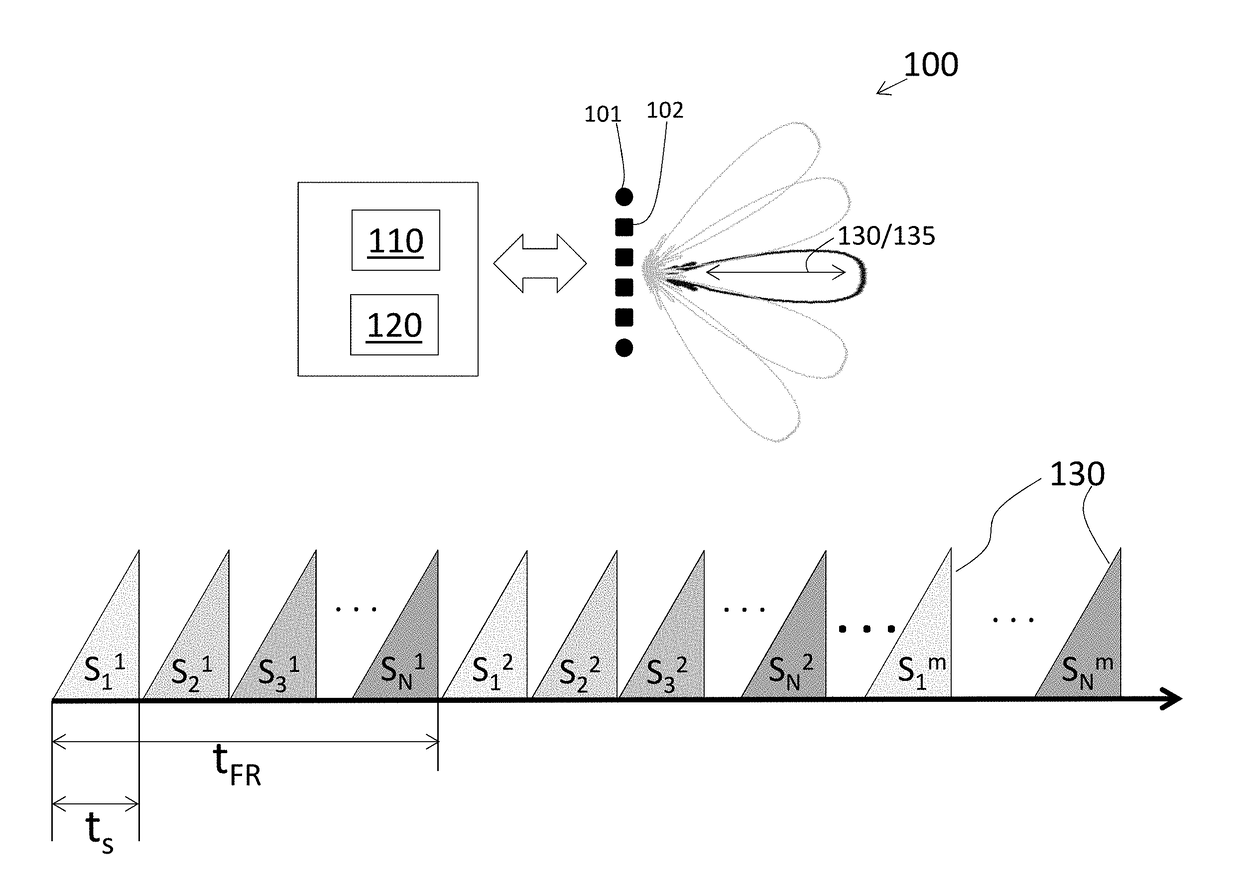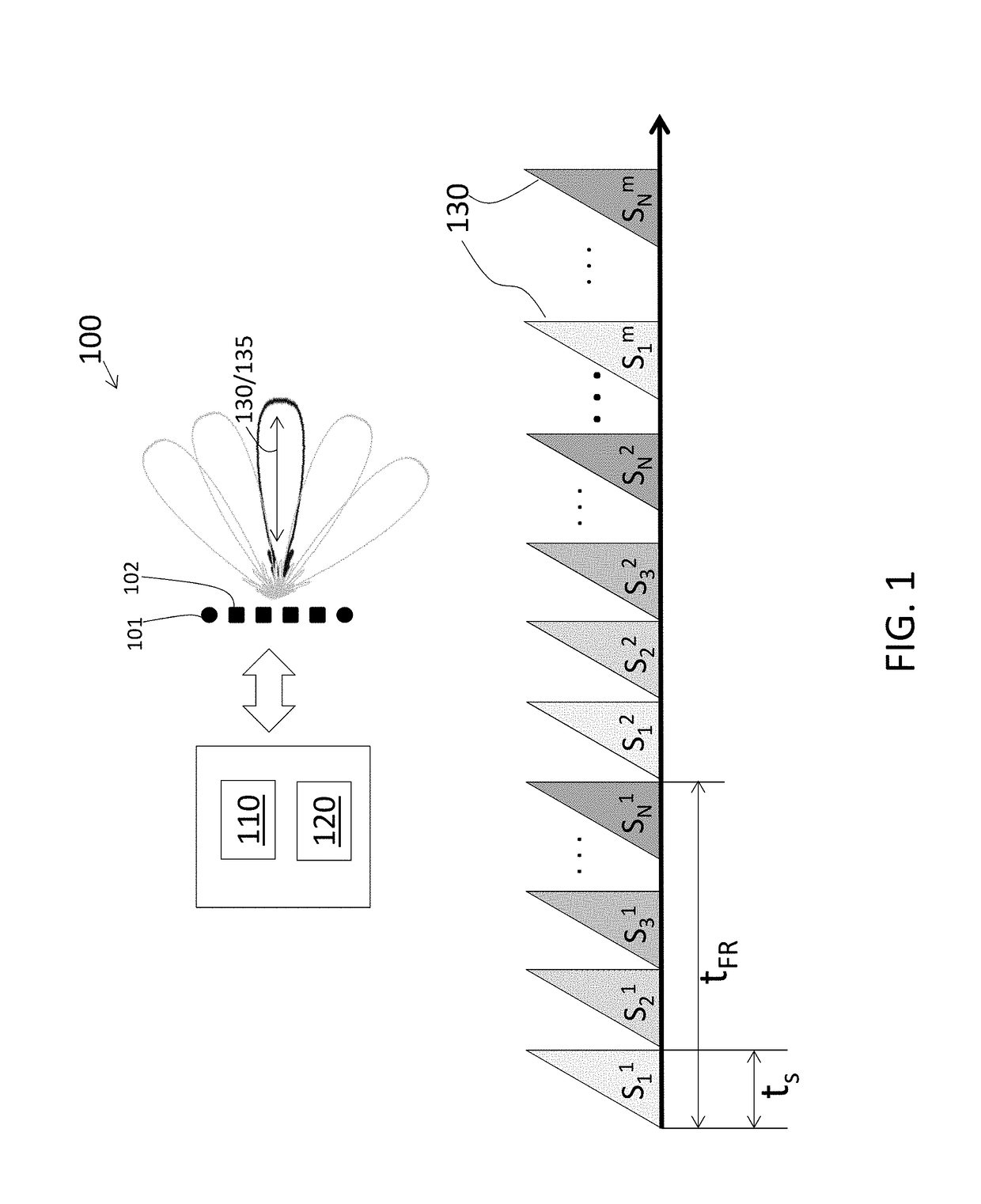Low latency decoding in multi-input multi-output radar
a multi-input, multi-output technology, applied in the field of low latency decoding of multi-input multi-output radars, can solve the problems that the decoding delay can affect the information obtained from reflections
- Summary
- Abstract
- Description
- Claims
- Application Information
AI Technical Summary
Benefits of technology
Problems solved by technology
Method used
Image
Examples
Embodiment Construction
[0011]The following description is merely exemplary in nature and is not intended to limit the present disclosure, its application or uses. It should be understood that throughout the drawings, corresponding reference numerals indicate like or corresponding parts and features.
[0012]As previously noted, code-based MIMO radar facilitates resolving which transmitters are associated with each received reflection at each receive element. The code-based MIMO radar according to embodiments herein is a linear frequency-modulated continuous wave (LFM-CW) MIMO system. Each LFM-CW signal exhibits a different linear increase (or decrease) in frequency over the duration of the continuous wave and is referred to as a chirp. The total time duration to transmit a chirp from every transmitter is referred to as the frame duration. Generally, the reflections resulting from each of the transmissions are received and decoded together. Accordingly, while the maximum detectable range is directly proportio...
PUM
 Login to View More
Login to View More Abstract
Description
Claims
Application Information
 Login to View More
Login to View More - R&D
- Intellectual Property
- Life Sciences
- Materials
- Tech Scout
- Unparalleled Data Quality
- Higher Quality Content
- 60% Fewer Hallucinations
Browse by: Latest US Patents, China's latest patents, Technical Efficacy Thesaurus, Application Domain, Technology Topic, Popular Technical Reports.
© 2025 PatSnap. All rights reserved.Legal|Privacy policy|Modern Slavery Act Transparency Statement|Sitemap|About US| Contact US: help@patsnap.com



